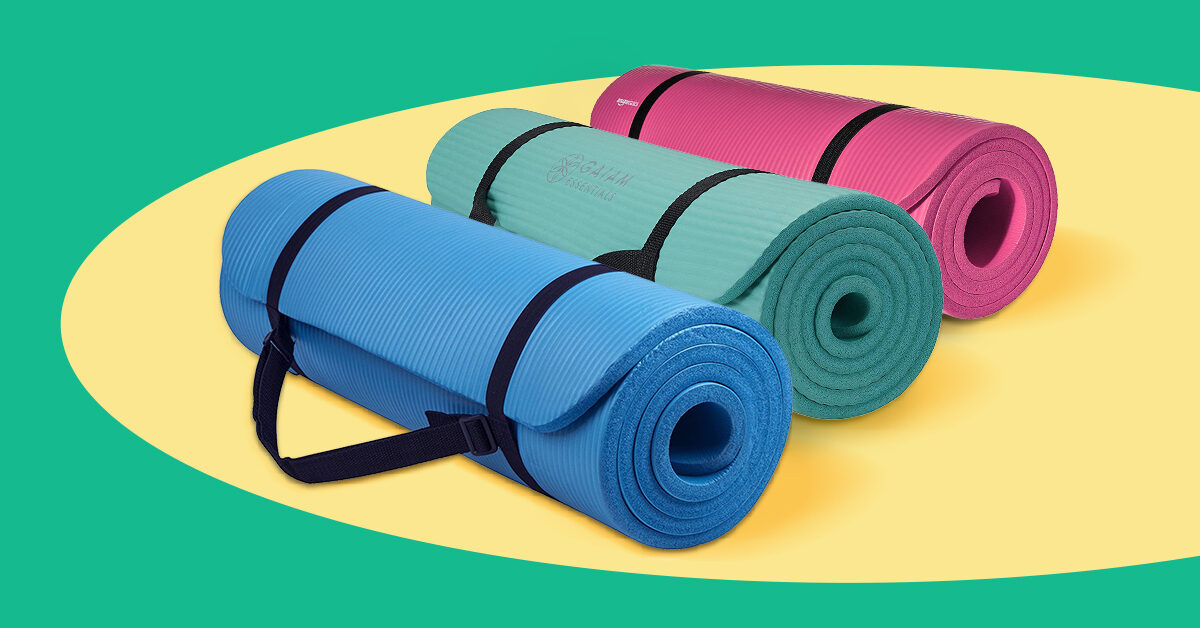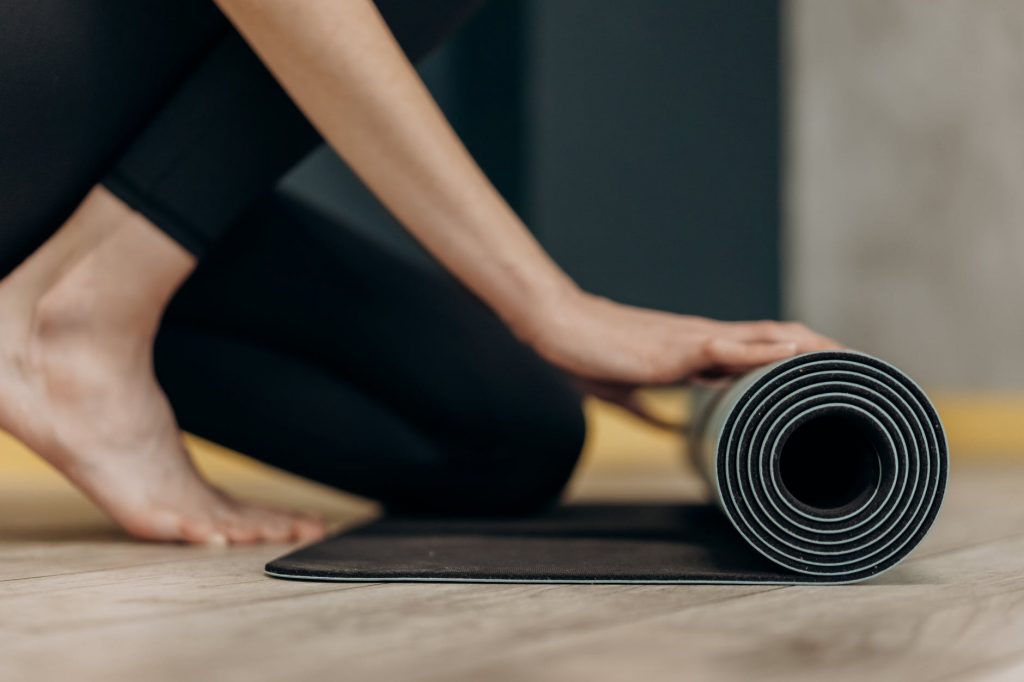One of the best ways to enhance your yoga practice is with a yoga mat. A good yoga mat can help you achieve better posture and keep you safe on all types of surfaces — from wood floors, tile or concrete, to grass.
There are different kinds of mats for different purposes. Here’s what you need to know about them, as well as why you should choose one that’s right for you.
Types of yoga mats
There are many kinds of yoga mats available on the market today. In general, they fall into two categories:
Standard mats:
These mats are made of natural materials like cork, foam rubber, and latex. They provide cushioning support, which is great for beginners but not always ideal for advanced yogis. Standard mats aren’t usually very absorbent, either, so they’re not great for sweaty classes.
Latex mats:
Latex mats are often recommended for people who have allergies or asthma because they don’t contain any of the animal proteins common in other types of mats. Latex mats come in several varieties, including memory foam, hybrid, and standard. Memory foam mats are particularly popular because they offer extra cushioning while providing good support for more advanced poses. Hybrid mats combine both memory foam and a firm base. Standard mats tend to be less expensive than latex mats but are still suitable for most people. They come in a variety of thicknesses and are typically the least expensive of the three options.

Waxed mats:
Waxed mats are an excellent choice for people who sweat easily, especially if you do hot yoga. Their porous surface wicks moisture away from the skin and helps prevent blisters. Most waxed mats also come with a slip-resistant bottom layer, making it easier to avoid slipping off the mat during postures. Waxed mats also provide some insulation against high temperatures, which make them ideal for outdoor workouts. Some brands even include a breathable top layer that allows perspiration to evaporate without letting heat escape.
Bamboo mats:
Bamboo mats are environmentally friendly and come in a variety of colors. They may feel slippery when wet, but once dry, bamboo mats tend to hold their shape well, which makes them easy to maneuver on uneven ground. They also won’t absorb much moisture, keeping you cool and comfortable throughout your session.
Cotton/wool mats:
Cotton and wool mats are great for anyone who sweats a lot or has a sensitive back. Unlike latex mats, cotton and wool mats can’t be used outdoors unless they’ve been treated with something like water repellant. Many people prefer these mats because they’re lightweight and durable enough to withstand regular use.
Polyurethane mats:
Polyurethane mats are similar to standard mats except that they’re thicker and designed specifically for more advanced students. They’re also more resistant to wear and tear, making them ideal for frequent use.
Memory foam mats:
Memory foam mats are great for people who need extra support during advanced postures. Because they mold themselves around your body, they’re able to provide extra cushioning without compromising support.
In addition to choosing between different types of yoga mats, you also need to consider how thick your mat needs to be. As a rule of thumb, the thicker the mat, the heavier it will likely weigh. If you plan on using your mat outside or on hard surfaces, it’s worth getting a thicker mat that will last longer and require fewer replacements.
If possible, get a thick mat from a reputable brand — but remember that some manufacturers claim that their products are “slip-proof” but don’t actually mean it. A thin mat won’t protect you from slipping either, so it’s important to test your new mat before you buy it.
Why you should choose a quality mat
The first step in buying a yoga mat is finding the perfect fit. You don’t want a mat that’s too thin or too heavy; you also don’t want a mat that’s too soft or too firm. The key is finding a balance between the two, which means testing a few mats out before settling on one that feels just right.
When selecting a mat, try standing up on it and moving around. Move slowly and carefully as you try out various spots on the mat. Do this a few times until you find a spot where you can stand comfortably without slippage or strain. This is your starting point. You can then move forward by adjusting the thickness of your mat according to your preference.
To help you decide, here are some factors that you should take into consideration.
Thickness:
Your mat should cover at least half of your floor area. If you’re doing yoga on carpet or wood flooring, you could opt for a thinner mat that covers only part of the space. But most people start with a thicker mat, such as one that’s about 2 inches (5 centimeters) thick, and add additional layers as needed. If you live in an apartment or condo, look for a mat that’s about 1.5 inches (4 centimeters) thick. The reason for this is that thicker mats are typically more stable and take more pressure off your joints. Lighter mats have trouble holding weight and may buckle under stress, leading to injury.
Firmness:
When you’re trying to figure out whether a mat is too firm or too soft, think about how much pressure it takes to sit down on it. Does it feel like you’re sitting on the ground? If so, you probably need a softer mat. But if you can sit down easily, you’re looking at a firmer mat. Look for a mat with medium firmness.
Durability:
Durability is another factor to consider. How long will your mat last? Will you have to replace it every year or two? It depends on how active you are and how much you use your mat. If you plan on spending hundreds of hours per year practicing yoga, a high-quality mat is likely to last you years. On the other hand, if you’re a beginner or a casual practitioner who uses the mat maybe twice a month, a lower-priced mat might be sufficient.

Weight:
A mat that weighs 50 pounds (23 kilograms) or more isn’t a good idea. If you have a busy schedule and need to bring your mat along wherever you go, a lighter mat will make it easier to transport and store. A mat that’s too light will compress too quickly, causing serious discomfort to the muscles and joints in your legs and back after extended periods of time. Also, a mat that’s too light will be unstable and dangerous in certain postures.
Materials:
There are several different types of fabric that can be found in yoga mats. Some mats are made of natural fibers such as hemp or recycled cotton, while others are made of synthetic fabrics. Natural fibers tend to breathe better, making them ideal for sweaty practice sessions. Synthetic materials are good choices for people who suffer from allergies or asthma, since they don’t contain any animal proteins.
Color:
Color can play an important role in determining what type of yoga studio you belong to. People who practice yoga in studios that don’t match their outfit tend to feel more comfortable than those who practice in bright, vibrant rooms. As a result, some people opt for dark brown or black mats that blend in with the decor of the studio. Others choose bright green mats, which are popular among practitioners of Vinyasa Flow, a style of yoga that includes fast-paced movements.
A person can plan to yogamatte kaufen that are available in the market. If the people will be alert then they can make the solution of the best option. The main motive of the people is to reach the goals and the effective results. The main matter of concern for the people is to have the good and the favorable results. a person can plan to go for the mats of high quality.






